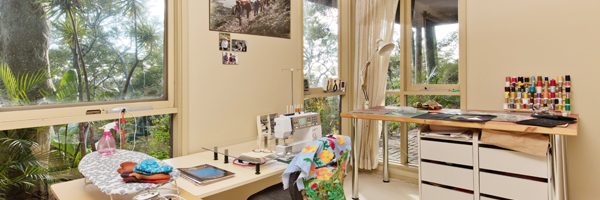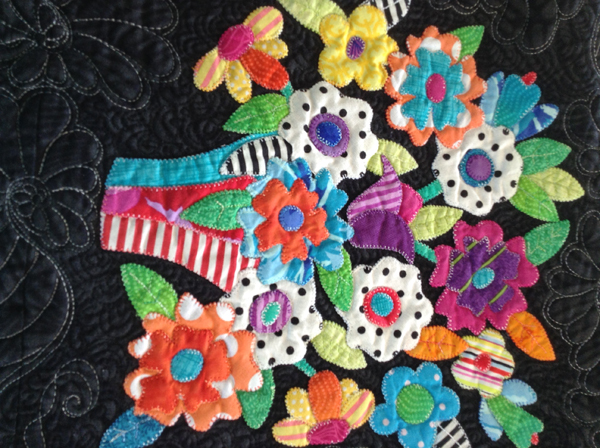
How To Quilt With Clear Thread
Have you ever used clear thread when machine quilting, perhaps successfully, perhaps not? Well, I would like to share with you one of my all-time favourite threads, MonoPoly.
This wonderfully versatile clear thread is made by Superior Threads. I visited their website for some information and this is what it said: “Our reduced-sheen monofilament polyester is the best choice when it comes to invisible threads. Unlike other monofilament threads made from weaker nylon materials, MonoPoly is made from polyester.
Commonly referred to as an invisible thread due to its fineness and reduced-sheen, MonoPoly is great for the bobbin or top. Available in two colours, Smoke (for dark fabrics) and Clear (for light fabrics). MonoPoly is often used for invisible appliqué and quilting when the stitching is not meant to be seen.
We recommend MonoPoly over nylon monofilament threads since MonoPoly will not become brittle over time (nylon monofilament thread tends to go brittle). MonoPoly will not discolour (nylon monofilament thread tends to ‘yellow’ over time), and MonoPoly is dryer- and iron-safe on medium-to-high heat.”
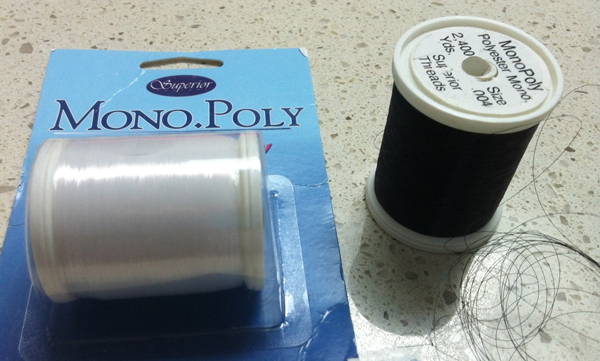
Superior Thread’s MonoPoly clear quilting thread in Clear (left) and Smoke (right).
Spring At Midnight Quilt is one of our most popular projects!
This lovely thread is, as the blurb above says, a POLYESTER, not a NYLON. Nylon, I have found, can be very difficult to use. It becomes brittle over time and will melt when ironed. I know many machine mechanics that have had machines brought to them all jammed inside with nylon thread.
When I quilt or appliqué, I need a reliable thread that will perform beautifully for me every time in many different circumstances. I should say at this point that I have no affiliation with Superior Threads at all — I’m just a big fan. Let’s go through some different ways to use MonoPoly.
When you’re ditching a quilt on your domestic machine with a walking foot and the quilt has many different-coloured fabrics, the choice of ditching thread can be overwhelming at times. My modern sampler quilt, shown in Photo 1, has many bright fabrics and the choice of which colour thread to use in the ditch could be confusing.
I have chosen to use the clear MonoPoly as the top thread and a black 50-weight cotton thread in the bobbin. When ditching, the stitches sit in the ditch of the seam — the flat side, not the raised pressed-seam side. So in fact, the stitches are hidden. A clear thread absorbs the fabric colour so you really are quilting almost invisibly — it is very difficult to see any of the stitching.
If you do happen to go off the ditch onto the high pressed-seam side, very little of the stitches are visible so ditching is made faster and easier. When every ditch seam has been sewn, the quilt lies flat and strong, allowing extra stitching inside the shape or around the shape if required.
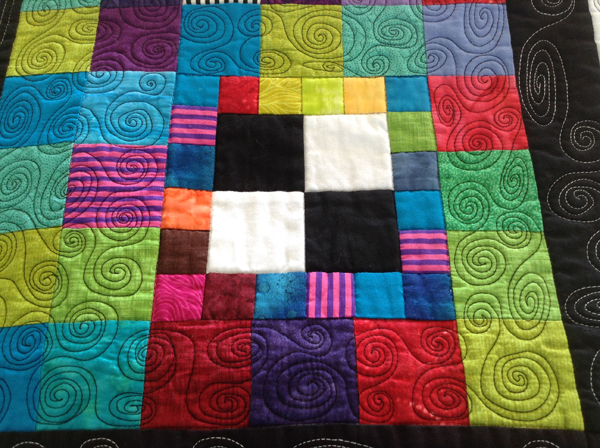
Photo 1: I used Clear MonoPoly for the ditch stitching on this modern sampler quilt. The stitches are virtually invisible, even when I strayed a little out of the ditch.
If your fabrics are dark — black, navy, or bottle green, for example — then the Smoke MonoPoly would be perfect. But because my sampler quilt had a mixture of light-, medium- and dark-value fabrics, I used Clear.
MonoPoly thread is also my choice when I am ditching appliqué. Photo 2 is a block from my Spring Floral Baltimore quilt. Here I have blanket stitched the shapes first. When free-motion quilting, I have ditched around the outside of the block first in black Polysheen.
Learn raw-edge machine applique, reverse applique and machine quilting with Amanda Daly
Then I quilted the background filler. I then ditched all of my individual appliqué shapes in MonoPoly. The high side is the blanket stitching and the ditch side is the shape underneath. I worked from flower to flower ditching any seam that lay on top of another shape.
This ensures that each petal, flower and leaf lies perfectly flat on the finished quilt as an individual motif and, most importantly, the stitching is strong. If you adopt a similar approach, you’ll find that the back of your quilts will look stunning as each appliqué shape is outlined.
I typically use a plain fabric for backings on these kinds of quilts so this detailed quilting becomes a wholecloth quilt on the back.
This quilt will now last a lifetime. The Clear MonoPoly absorbs every colour in the fabrics. It is actually quite easy to use and watching the appliqué really come to life is lovely. It is extra work but very beautiful, respectful quilting.

Learn how to modernise traditional quilt blocks with Leanne Harvey!
Photo 3: The ditch stitching around every appliqué shape using Clear MonoPoly really brings the appliqué to life, while simultaneously creating a detailed wholecloth design on the back.
MonoPoly thread requires a light top tension. This means a low number. If, say, normal tension on your machine is around 4 out of 9, or in some machines, ’Auto’, then turn the top tension dial to 2. If the top tension is too tight (or on too high a number), a few things will happen.
First, the thread will break, which is very frustrating. Second, the thread looks tight on the fabric. Third, the top thread draws the bobbin thread to the top fabric. You can see an example of this in Photo 4, where the stitching on the left was done with a top tension of 5.5, which is not usually tight for cotton thread but far too tight for MonoPoly.
Although this was only a small amount of quilting, the thread broke twice before I completed it. If you look closely, you can see ‘dots’ of bobbin thread have come to the top; this is not the look I am after! I loosened the top tension to 2, and I free motion quilted the stitches on the right. No breakages at all, even under fast needle speed. Perfect stitching.
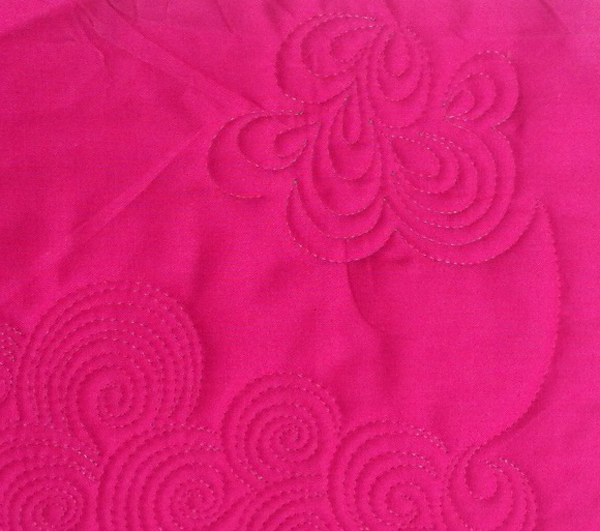
Photo 4: The stitching on the left of this sample shows what happens when the top tension on your machine is too tight when quilting with Clear MonoPoly: the bobbin thread is drawn to the front of the work. The stitching on the right shows work completed with the correct tension.
The thread absorbed the hot pink colour, resulting in a wonderful texture on top of the fabric. Perfect if you’re after a background quilting filler to blend with your quilt but can’t find a thread to match your fabric. There is also a light sheen to the thread.
On the hand-dyed coral fabric shown in Photo 5, I used both Clear and Smoke MonoPoly thread. On such a light fabric, Smoke looks very fine, like a 100-weight thread. Clear just gives the coloured fabric texture; the focus is still on the hand-dyed look, but now with quilting as added texture.
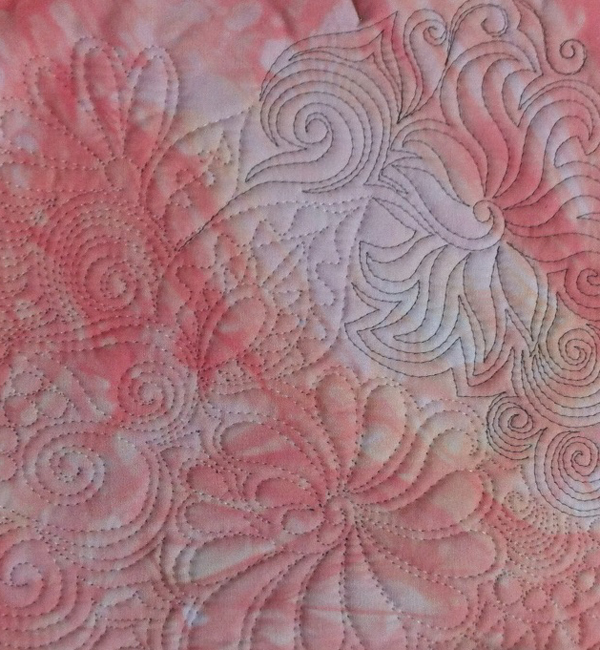
Photo 5: Quilting worked with Smoke (upper left) and Clear MonoPoly thread on a hand-dyed fabric.
MonoPoly is perfect for shadow quilting. Shadow quilting is outlining the printed design. Photo 6 shows a rose print fabric where I just stitched around the outer edge of the motif, then came into the rose and leaves with some simple quilting to add dimension. No thread colour changes were needed. This means fast quilting with a great result every time.
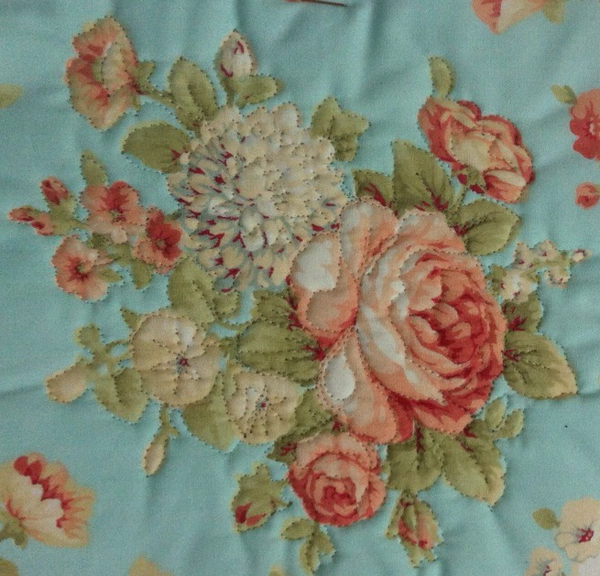
Photo 6: Shadow quilting on a print fabric with Clear MonoPoly thread — easy, fast and fabulous!
I used a size 70 microtex needle for this quilting. It’s very sharp so the hole left in the fabric is minimised. Superior Threads advise to use MonoPoly in the bobbin too. Perhaps try this for yourself. I prefer to use 50-weight cotton or 80-100-weight polyester in the bobbin. I find that sometimes when MonoPoly is in the bobbin, the thread spins off too quickly, resulting in the thread jamming my machine, meaning a trip to the mechanic might be in order…
Perhaps you’d like to give this sensational thread a try? Ask your local patchwork shop to get in a few reels so you can experiment. I am very confident you’ll fall in love with this versatile thread as much as I have.


